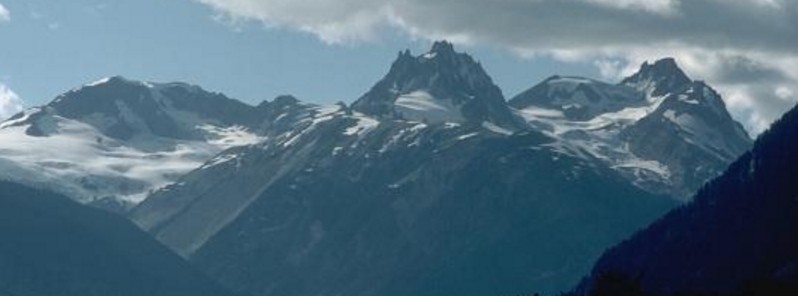Sulfur smells and fumaroles spotted on long-dormant Mount Meager, Canada

Volcanologist Melanie Kelman with the Natural Resources Canada said sulfur smells and volcanic openings known as fumaroles were recently spotted on the long-dormant Meager volcano. Kelman added that it is not uncommon to find fumatoroles on the peak, and it could have been thinning ice that exposed vents.
"Fumaroles pose no risk to the public, but it would be unsafe to approach and enter them as they are letting off hydrogen sulfide, a poisonous gas, and ice around them is crevassed and potentially unstable," Kelman said for CBC.
She added they are not seeing a lot of small earthquakes, a sign that the volcano was becoming more active.
"We're not seeing a lot of that right now, but this is what we would expect, and that's why we're watching it closely."
Mount Meager lies in the Garibaldi volcanic belt and is the northernmost volcano of the Cascade volcanic arc that extends down to northern California. The summit of the complex consists of overlapping piles of andesitic lava flows and younger dacitic lava domes and flows.
The most recent activity from the Meager volcanic complex about 2350 years ago produced Canada's largest known Holocene explosive eruption and an associated welded block-and-ash flow and a lava flow from a vent on the NE flank of Plinth Peak. Ash reached as far as Alberta.
Kelman added there is usually plenty of warning before a volcanic explosion takes place — mainly intensifying seismic activity — and B.C. scientists are well equipped to move in with intensive monitoring.
"It could be biding its time… With Mount Meager, we don't know. It may erupt 10 years from now, 50 years from now, or 3 000 years from now."
Featured image: Mount Capricorn, Meager Mountain, and Plinth Mountain, from left to right, seen above the Lillooet River valley to the SE, are three of the 8 volcanic centers forming the Tertiary to Holocene Meager volcanic complex. Deep glacial erosion has exposed the interior of a group of dissected rhyodacite volcanic necks forming the highest peaks. Photo by Lee Siebert, 1987 (Smithsonian Institution).

Are those Batholithic ?